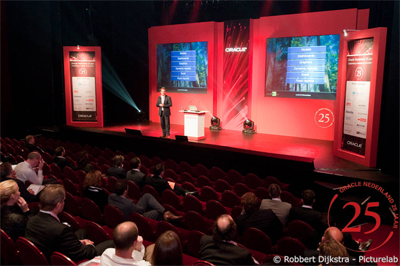Combination Economy

Yesterday I had a very nice face to face meeting with Frank Buytendijk. We both held a speech at Oracle Netherland’s 25th anniversary. Between his presentation and mine there was a 1,5 hour gap. So we talked about our speeches while drinking a diet Coke. It’s always a pleasure to talk to someone with a similar passions and similar thoughts.
While driving home that evening I was thinking about our conversation and both our speeches. Suddenly 1 word came to my mind: combinations. We are living in a Combination Economy. Product leaders have been doing it for several years now. There are a lot of examples: At Volvo you can assemble your own car, Senseo is a cooperation between Philips and Douwe Egberts, at Build-a-bear you can create your own teddy bear, at Adidas you can create your own running shoe. And now it’s everywhere: we want to combine home and work, even families are being combined nowaday’s.
To get back to both Frank’s and my own speeches: it’s all about creating functional elements on business levels. Let’s call them Business Elements. Functional business elements are needed to be able to create combinations. Thinking in processes is not the solution for this anymore. Frank was giving a presentation about management Excellence. When put in my words, what he did was creating the business element ‘Management’. By breaking down that business element he derived the management activities ‘Gain to sustain’, ‘Investigate to invest’, etc. Every management activity was divided into 5 activities. By having that decomposition of the Business Element ‘Management’, Frank was able to create management processes on the fly. (Click here for Frank’s presentation)
My speech was about transforming business processes to business functions. Let’s call them Business Elements too. I stated that by having business elements we are able to combine Business Process Management, Enterprise Architecture and Business Intelligence. Business wise we would be able to be cross operational by combining our excellence logistic services within other supply chains. So it’s all about creating combinations. (Click here for my presentation)
But why hasn’t it been happening with IT and the Business? IT and the Business are not up to speed when it comes to concepts like these. I think it’s because of all the “finger pointing”. Yesterday too, I watched someone lecturing about collaboration. It was a very nice presentation with a lot of good elements. Unfortunately he kept using sentences like: “IT doesn’t understand the business”. I think addressing IT people that way, isn’t very collaborative. On the other hand, IT people always talk about “the Business not understanding the new technology”. Both worlds create new solutions. IT wants to get in business through Service Oriented Architecture, a solution so complex that the business user really doesn’t understand it. And the business wants to put everything in the cloud. Like if the business wants IT to be invisible, or at least as far away as possible.
But we shouldn’t drive those worlds apart. Both need to get closer. IT and the business need to combine their knowledge. The best way for combining that knowledge is using Business Elements to create new primary, secondary and management processes. Only together IT and Business can create success within the combination economy.
>@marcel: thanx for the review


